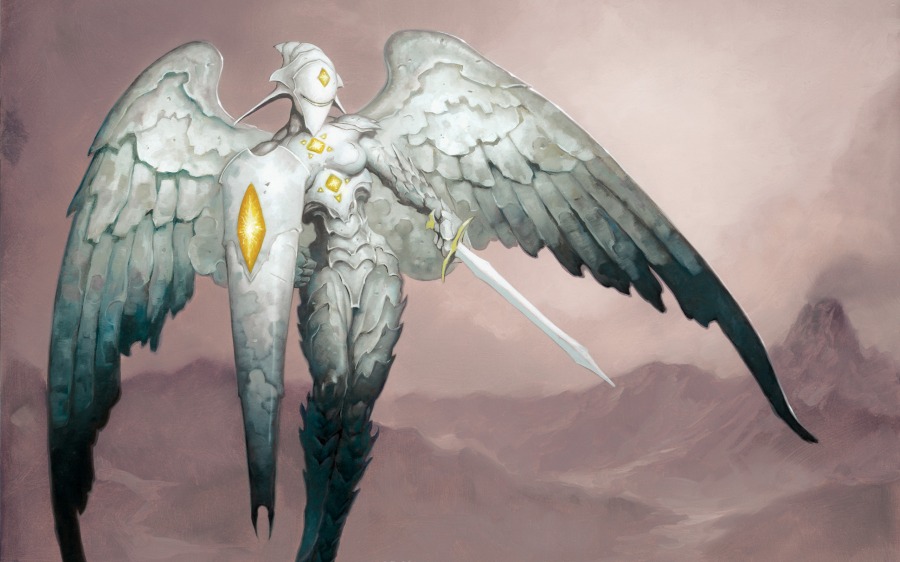Conquering the Commander Cube: Balancing Your Cube Pt 1

Greetings, Commander players! Today we're back with another installment of Conquering the Commander Cube, and this time we are talking about balancing a Cube. This will be another two-part article, as there are a lot of elements to cover related to this topic.
As discussed in the inaugural edition of Conquering the Commander Cube, balancing your Cube is an integral part of making your Cube fun, dynamic, and interesting to play. It's also important in increasing the longevity of your Cube. Remember that Cube design is game design, and one of the most important aspects of game design is balancing your game to avoid dominant strategies and promote diversity and a variety of draft experiences.
There are a few different kinds of balancing to consider when balancing your Cube, and they include:
- Color Balancing
- Card Type Balancing
- Archetype Balancing
- Power Balancing
- Mana Value Balancing
- Rules Considerations that Affect Balancing
In today's article, we will discuss the first three items on the list, and next time we will discuss the second three items.
1. Color Balancing
The first type of balancing I want to discuss is color balancing, as many of the other kinds of balancing will stem from color balancing. You'll want to make sure that, unless you're planning on designing color-specific Cubes, you have a relatively even distribution of colors across the pool of cards. You also want to allow a degree of flexibility on individual cards so that they can fit in a higher number of decks. This means that cards with multiple colors (especially more than two) and multiple pips of a single color make it harder for players to put them in their decks, especially if you take a similar approach to myself and you build your Cube with three- and four-color commanders. For instance, Akroma, Angel of Fury
For that reason, it's generally best to stick to one- and two-color cards and cards with single-color pips so that players can fit cards into a wide variety of decks. Some examples of cards that fit in this category include Lightning Bolt
2. Card Type Balancing
The next type of balancing that you'll want to think about is card type balancing. Ensuring that there's a healthy balance of lands, creatures, enchantments, artifacts, planeswalkers, instants, and sorceries in your Cube is important so that players have a healthy number of cards of each type to choose from in their draft pools. With that said, draft formats tend to be creature-focused, so you'll want to have a high volume of creatures to make sure that players are able to attack and defend throughout most of the game.
One easy way to offer variety and flexibility when it comes to card types is to include a plethora of cards that are multiple types. Cards such as Dryad Arbor
Another tactic is to simply limit or omit certain types. For instance, a lot of players (not including myself) don't like planeswalkers in Commander, so you could simply limit the number of or entirely omit planeswalkers in your Cube. I would definitely recommend omitting newer and more obscure card types, such as battles, as it will be hard to make them synergize with most cards in your Cube as there simply aren't enough of them in the game yet.
3. Archetype Balancing
The last type of balancing that I want to talk about today is archetype, or strategy, balancing. You want to make sure that there is a healthy variety of viable strategies for your players to choose from. Remember what we talked about before: interesting game design is predicated on the notion of meaningful choices and avoiding dominant strategies. With that said, archetype balancing is a balancing act (pun intended), and you want to make sure you aren't trying to include too many archetypes. The overall size of your Cube will help you determine how many archetypes you want to include, but in general, I would say that you should aim for 6-8 archetypes.
And again, you want to make sure that you are choosing archetypes with a sizable pool of related cards, so mechanics like energy, morph, and battles probably aren't great choices.
Some archetypes that are good choices include:
- +1/+1 counters
- Reanimation
- Aristocrats
- Life gain
- Enchantments/enchantress
- Artifacts
- Tokens
- Burn/direct damage
- General control
- General aggro
- General counters
I would recommend steering clear of typal (formerly tribal) strategies, as they will prove difficult making sure that players have a healthy volume of typal cards in a draft.
Final Thoughts
We'll talk about this more in part 2 of this article as well as when we discuss rules considerations and customizing your Cube in future articles, but I also want to briefly mention that your Cube's rules and pack design will also have a bearing on the overall balance of your Cube. Something to consider is balancing individual packs to contain at least one card of each color and each type; that way there's a high probability that at least one or more of them will be enticing to players, regardless of the commander they choose.
Hopefully you found these considerations useful, and I hope that you will tune in next time when we wrap up with the rest of the balancing considerations for your Cube. Until then, happy gathering!